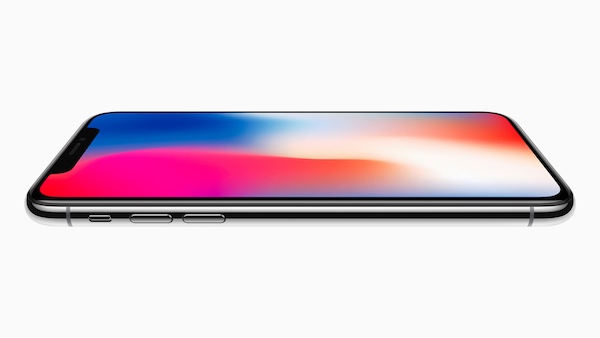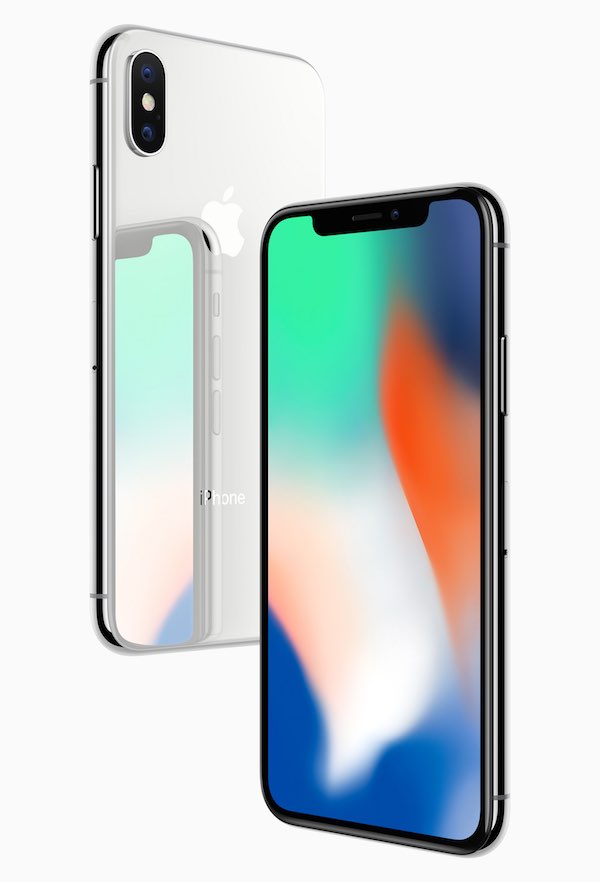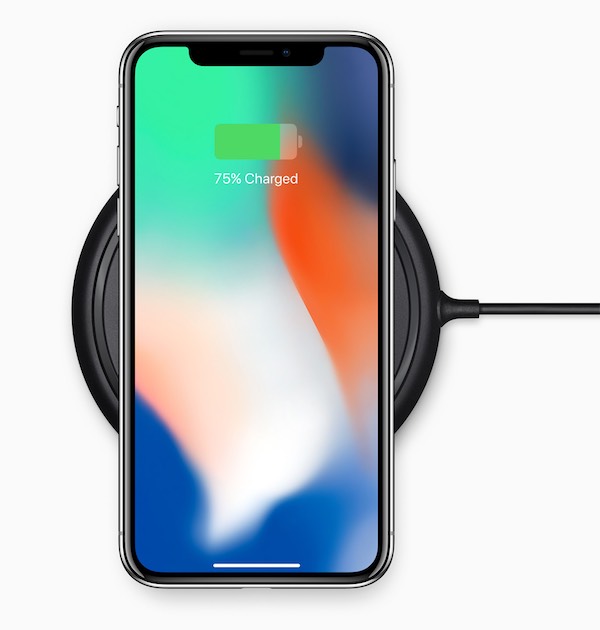
[Image above] The new Apple iPhone 8, iPhone 8 Plus, and iPhone X all feature glass panels on the front and back. Credit: Apple
By now, you’ve probably heard that the rumors are true—Apple’s newest iPhones have shed their aluminum skins for an “all-glass design” instead, complete with front and back glass surfaces.
Which also means that another rumor seems to be true, too—we really are living in the Glass Age.
Apple unveiled three new iPhone models on Tuesday: the iPhone 8, iPhone 8 Plus, and iPhone X.
While the iPhone 8 phones feature minor incremental changes over the previous iPhone 7 series models, the iPhone X (“ten”, not “x”) is going big or going home.
The iPhone X—available for sale on October 27, with a price tag starting at $999—is the first iPhone to completely remove its bezel, meaning that its also-a-first OLED screen stretches completely across that slick new glass front face.
The iPhone 8 and 8 Plus make their debut earlier and cheaper that the iPhone X, instead arriving in stores on September 22 and stating at $699 and $799, respectively.
But despite their performance and feature upgrades and differences, in the looks department, all three models got the glass facelift.

Back and front views of the new Apple iPhone X. Credit: Apple
Although an all-glass design has some freaking out over the threat of two broken smartphone surfaces, the new iPhone models use “the most durable glass ever in a smartphone, front and back,” according to Apple.
Previous Apple iPhone users may be partially dubious of glass backs because of flashbacks to the also-glass-backed iPhone 4. However, those earlier models were backed with an unstrengthened panel of glass that understandably shattered relatively easily.
But Apple says that the new iPhones’ glass surfaces feature a 50% deeper strengthening layer. Plus, the strengthened glass is laid on top of a steel substructure that provides additional reinforcement.
While even strengthened glass with improved durability may still seem like a gamble for a smartphone that is sure to be tossed, bobbled, and dropped, the all-glass back adds an important new functionality for Apple—wireless charging.
The new iPhones can be charged simply by laying them on top of wireless charging stations and mats, offering the possibility of completely cutting the charging cord.

New iPhones can wirelessly charge through their glass backs. Credit: Apple
“How do you build an iPhone out of durable glass that also allows for wireless charging? By formulating a new kind of glass. Reinforcing it with a laser-welded steel foundation and an aerospace-grade aluminum band. And engineering it down to the micron for water resistance,” Apple states on its website.
[Quick note: while the iPhone 8 and 8 Plus feature an aerospace-grade aluminum band in between the panes of glass, the iPhone X instead uses surgical-grade stainless steel that is an “Apple-designed alloy,” which is an interesting departure from Apple’s signature aluminum.]
So what is this new kind of glass, the most durable yet, that is engineered down to the micron level?
We know that it’s not easy to engineer commercial-grade glass down to the micron level. In fact, there are a relatively small number of organizations that can do so and supply such a product to the level that Apple requires.
And beyond even the logistics of supply, the glass wrapping the new iPhones sounds to me suspiciously similar to a material that you would describe as one that “touts dramatically improved drop performance compared with competitive glass designs.”
So do the new iPhones use Gorilla Glass 5?
When posed with the question, a Corning contact gave me a Glomar-esque response, saying that they would not comment on a specific device.
But, they were willing to say this much: “Corning has supplied Apple with Gorilla Glass for the iPhone since the product introduction in 2007, and we continue to be a glass supplier to Apple.”
I don’t know about you, but that sounds promising to me.
